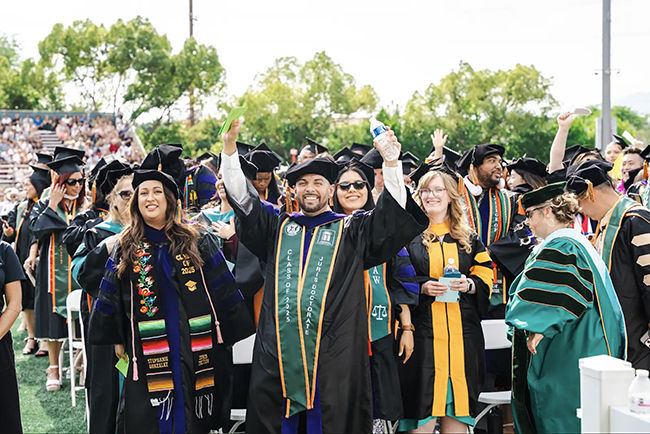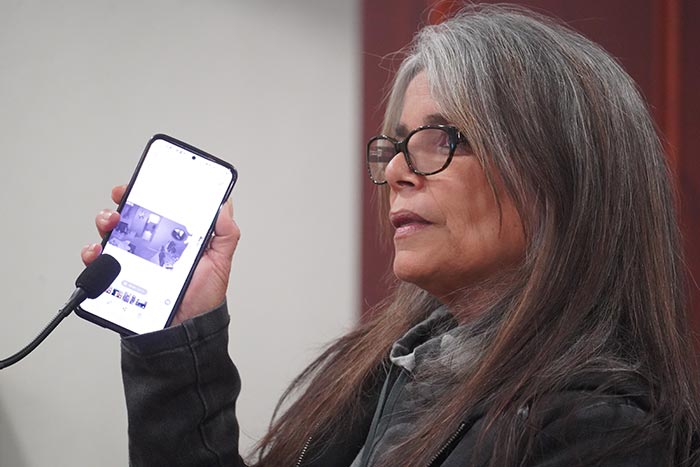A year we’ll never forget
by Steven Felschundneff | steven@claremont-courier.com
This weekend marks the one-year anniversary of the day the pandemic officially reached Claremont, launching an avalanche of decisions that shutdown the city including our businesses and schools.
Since March 13, 2020, every Claremont resident has experienced difficulties that most of us never imagined would come to Los Angeles County, including food and supply shortages and living under a statewide stay-at-home order. Fourth of July festivities were canceled as was Village Venture and countless other private social events. The Google Maps Street View of the Claremont Village now shows the parklets that restaurants constructed to comply with the outside dining order.
Most importan
On March 24, the county reported the first confirmed case of the coronavirus in Claremont, a week later came the second. Before long, everybody knew someone who had become sick, and sadly many knew a person who died.
Those first weeks were fairly terrifying, with news of the devastating death toll in Italy and stories of people fleeing affected areas, only to spread the virus to the rest of the country. Before long, the virus began to accelerate here, making Southern California one of the hardest hit areas in the entire world. As of Wednesday, cumulative cases in Los Angeles County reached 1,206,713 with an astounding 22,213 people dead.
A year later, instead of hearing about new local cases on a daily basis, now a colleague or neighbor proudly reports that they have received the vaccination. People are feeling emboldened, for better or worse. The Village is crowded with shoppers and diners again.
As Claremont reaches this one year anniversary, the county reports 19 new cases and a cumulative total of 2,245. Sadly, one more Claremont resident has died, bringing the total mortality count to 54. The county has not updated its localized vaccine data since February 20 when it was 23.1 percent in Claremont.
“The last year has taught businesses and the city how to be more adaptable. Many businesses have had to fight for their existence and found creative ways to provide their goods and services to the community. Likewise the city has had to come up with creative solutions to continue its programs and services. The impact of technology and the realization that we can do more remotely than we thought possible prior to the pandemic is a big lesson we’ve learned. I think a lot of the ways that we have engaged with the community via platforms like Zoom will probably become a fixture even after the pandemic is over,” City Manager Adam Pirrie told the COURIER on Wednesday.
The state has committed to reserve 40 percent of coronavirus vaccine doses to those in communities hardest hit by the pandemic, including people of color. This “vaccine equity” has been a priority of Supervisor Hilda Solis, who represents Claremont.
“I would like to commend Governor Gavin Newsom for allocating 40 percent of the state’s vaccine supply to the hardest hit communities. with this plan we can ensure that many highly impacted areas in the county often where many of our essential workers live would be prioritized for the vaccine,” Supervisor Solis said.
Last Friday, the state announced updates to the Blueprint for a Safer Economy which will make it easier for counties to move out of the most restrictive purple tier. Once two million doses have been administered in the most under-resourced communities across the state of California then the state is set to relax the other three metrics used to move to the red tier.
“In addition to assessing county case rates, positivity rates and positivity rates in neighborhoods with the lowest scores in the Healthy Places Index, the state is now taking into consideration the number of vaccinations that have been administered in the lowest resourced neighborhoods statewide,” health officials said in a statement.
With a daily case rate at or below seven per 100,000 people and a test positivity rate at or below eight percent over the last two weeks, Los Angeles County was already on track to advance to the red tier by March 17. However, under the updated framework, the threshold will be 10 new cases per 100,000 people, which the county has already met.
The county signaled that the state may meet its vaccination goal in the next several days, which would trigger a revised health officer order as the county transitions to the red tier as early as the weekend.
“We are excited at the expanded opportunities for businesses under the red tier. The red tier will allow our restaurants and retail businesses to begin serving customers indoors in greater numbers. However, it is also important to remind everyone to remain diligent in following safety protocols to continue to impact the incidence of new cases,” Mr. Pirrie said.
The most encouraging recent data from the county showed that the first group of people vaccinated, including frontline medical professionals and nursing home residents, are experiencing much lower rates of infection compared with the population as a whole. That bodes well for efforts to reopen the local economy, and public health officials hope that a fourth wave of infections can be avoided. However, those same officials warn against letting our collective guard down too soon.
“The seven-day average of new cases by episode date has continued to decrease and as of February 28th is about 700 new cases a day. We have returned to daily case numbers that we call our pre-surge levels and this is wonderful news,” Los Angeles County Director of Public Health Barbara Ferrer said. “But it is critically important to remember that continuing declines are not inevitable. And all around the country we now have examples of states that are starting to experience increases in cases.”
Ms. Ferrer expressed concern that, just like Thanksgiving and Christmas, mass gatherings on Easter and spring break, combined with the spike in cases of the more contagious variants of the coronavirus, could result in significant new community spread.
Wednesday marked another one year anniversary for Los Angeles County as reported in the daily news briefing from county public health.
“Today marks the one-year anniversary of the first death from COVID-19 here in L.A. County. Tragically, one year later, over 22,000 people, including grandparents, mothers and fathers, sisters and brothers, friends and co-workers, have passed away from this terrible virus here in L.A. County, leaving a huge void behind. There has been tremendous tragedy and suffering here and across the world, and to all who are mourning, we are with you in your sorrow,” Ms. Ferrer said.
As cases decline the number of people hospitalized with COVID-19 has also fallen to just 1,079 on Wednesday, 30 percent of whom are in ICU. Also on Wednesday the county reported 1,514 new cases and 199 deaths, although case numbers reflect a back log from “faxed provider reports.”
“Now that the vaccine has become available to a much wider group of county residents and the daily case rates continue to decline, it appears that the worst of the pandemic may be behind us,” Supervisor Solis said on Monday.










0 Comments